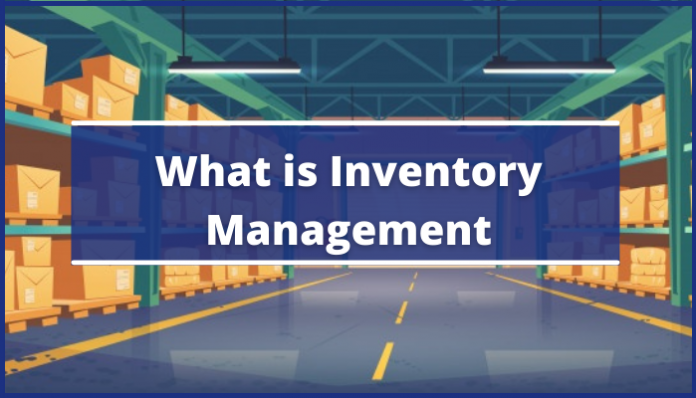- Introduction
- Why is Inventory Management Important?
- What are the Benefits of Inventory Management?
- Inventory Management Challenges
- What is Inventory Management Process?
- Inventory management for retail business
- Inventory management for Wholesale business
- Inventory management for manufacturing business
- What is Inventory Management Software?
- How to Choose the Right Inventory Management Software?
- Inventory Management Techniques You Must Know
Table of Contents
ToggleIntroduction
Inventory management helps businesses know the right amount of stock to order at the right time. It further helps in tracking inventory from purchase to sales of products. Inventory management makes sure to identify the market trends to ensure there’s always enough stock in the godowns to fulfill customers orders with proper notifications for shortages.
Once inventory is filed, ties up cash because too much costs stocks mean extra money & reduce the cash flow. Once the products are sold it transforms into revenue. One classification of good inventory management is inventory turnover. It measures how often the stock is sold in a particular period, what are the losses incurred & other miscellaneous expenses. Any business doesn’t want more stocks to be kept on shelves than the demand. Forecasting demands is another crucial task here. The poor inventory management system can result in deadstock or expired stock.
Why is Inventory Management Important?
Inventory management is crucial for the well-being of a business because it helps make sure there is appropriate inventory in the stock, not too much not too less to serve the demand of customers. Proper inventory management system limits the risk of stock-outs & inaccurate records.
What are the Benefits of Inventory Management?
The major benefit of inventory management is that you are able to fulfil customer demand & raise profit out of it. Some other benefits are listed below:
Saves Money:
The inventory management software helps you understand the market trends, and suggests to you what to buy at what time. This way you can stock the products in high demand which sell out quickly saving you extra money. You can easily circulate your money & none is frozen with the dump stock on the shelves. This also allows you to keep less stock at each location, as you can fulfil the order from any location using an integrated system. All of this decreases the cost tied up with the unsold goods before it’s obsolete.
Improves Cash Flow:
To improve your cash flow system you will need good inventory management software. With the proper software, you will spend money only on the products that sell. Therefore your cash is always moving in & out improvising the entire cash flow & in turn revenue.
Customer Satisfaction:
Another important aspect is where you can deliver the required products to the customers without having them wait for long. You can only achieve this if you have studied your customer’s purchase history & market trends properly. And the inventory management software makes this simple for you.
Inventory Management Challenges
The main challenges of inventory management are:
- Having too much stock & not being able to sell it
- Having too little stock to meet customer’s demand
- Having too much dump or obsolete stock
- Difficulties in tracking items in your inventory
- Losses due to expiry, breakage & more
You can easily overcome all of these challenges with proper inventory management software in place.
Getting Accurate Stock Details:
If you don’t have accurate stock details, there’s no way to identify when to refill stock or which stock is in demand.
Update Processes:
You need to update your inventory management process. Outdated or manual processes can involve human errors and slow down inventory operations.
Demand Forecasting:
Demand forecasting is extremely crucial in the inventory management process. Customer tastes and demand keeps on changing. If your system can’t track trends, how will you know when their preferences change and why? And this is definitely not possible manually.
Using Warehouse Space Well:
If your staff will utilize extra time in locating the items in your inventory, wastage of time means wastage of money. With an inventory management system, you can locate the item on your software & easily save time. Plus there will be no dump stock so you will have extra vacant space.
Mastering inventory management can help eliminate this challenge.
What is Inventory Management Process?
The inventory management process starts when you buy the items in your inventory. Whether you are a wholesaler, manufacturer or retailer, from the point the item enters your warehouses till it reaches your customer, the whole process is inventory management. In other words, the process begins when you forecast demand and place orders to your suppliers. Other parts of the inventory management process include analyzing sales trends and organizing the storage of products in warehouses.
How does it work?
The aim of inventory management software is to identify the stock levels & locations’ in the warehouse. The complete process is tracked from the supplier till it is shipped to the customer. Inventory management software tracks report in every stage- stock receipts, packing, shipping.
Inventory management for retail business
As compared to other businesses retail inventory management is less complex. The process includes using the software for stocking inventory using barcode scanning, set profitable prices in the system, set min/max stock level to meet the consumer demands, & update inventory on every sale. With software, a retailer can achieve all of these & automate repetitive tasks. You can also print a barcode tag to stick on the item to easily track in real-time.
Inventory management for Wholesale business
A wholesale or distribution system signifies dealing in bulk. In this, the dealing is business to business & inventory management processes are accordingly. Expiry, breakage, dump stock everything is calculated here. The companies need to manage proper inventory to keep enough stock in hand to meet retailers demand.
Inventory management for manufacturing business
In regard to the manufacturing business, inventory management is the most complex process. In manufacturing firms, raw materials are purchased instead of finished goods. The inventory management system needs to keep a track of the raw materials as it transforms into finished goods till leaves the warehouse to reach the customers. In a manufacturing business, you need to comply with government norms & provide valid certificates of quality etc. Inventory management software also helps in simplifying this entire process. Plus multi-warehouse management, supply chain management, C&F everything is taken into account.
What is Inventory Management Software?
An inventory management system is a complete software package to track stock levels and product movements. The solution can integrate with multiple location management, sales systems and shipping systems. Good inventory management software ensures optimum inventory levels & product availability across multiple locations. It is a single dashboard system that provides a real-time view of products, stock, rates, schemes, orders across all locations & sale points. It basically keeps all locations in coordination with each other. This enables businesses to stock less inventory in hand & frees up extra cash to be spent on other important parts of the business. An inventory management software helps keep inventory cost low while delivering high profits & revenues.
How to Choose the Right Inventory Management Software?
Choosing the right inventory management software depends on two things:
First: What is your business type?
Second: What is the exact requirement of your business?
Selecting inventory management software is a matter of identifying the features your business needs. Like, do you need to only track products, or stock movements, or track trends or sales & so on as we discussed above.
Click To Download
Inventory Management Techniques You Must Know
Here’s a list of inventory management techniques & terms. Read on to find out which works best for your business to improve accuracy & profits. The techniques depend upon need & stock.
ABC Analysis:
This method works by defining the most and least in-demand types of stock.
Batch Tracking:
In this method, similar items are grouped to track expiration dates and identify defective items.
Bulk Shipments:
In this method, unpacked materials that suppliers load directly into ships or trucks are considered. It involves buying, storing and shipping inventory in bulk.
Consignment:
When practicing consignment inventory management, you won’t pay the supplier until a given product is sold. The supplier is the owner of the inventory until your company sells it.
Cross-Docking:
In this method warehousing of items is essentially eliminated. The unloaded items are directly transferred from a supplier truck to the delivery truck.
Demand Forecasting:
This form of predictive analytics helps predict customer demand & stock the correct amount of items.
Drop shipping:
In this method, the supplier ships items directly from its warehouse to the customer.
Economic Order Quantity (EOQ):
This formula applies to find out how much inventory you should order to reduce holding and other costs.
FIFO and LIFO:
First in, first out (FIFO) means you move the oldest stock first. Last in, first-out (LIFO) states that prices always rise, so it is advisable to sell the most recently purchased inventory first.
Just-In-Time Inventory (JIT):
Companies use this method in an effort to maintain the lowest stock levels possible before a refill.
Materials Requirements Planning (MRP):
This system handles planning, scheduling and inventory control for manufacturing firms.
Minimum Order Quantity:
To keep the cost low, in this method the company orders the minimum quantity from the wholesaler.
Reorder Point Formula:
In this method, the user sets a min stock level for inventory. Whenever the inventory reaches the minimum level, the system gives an alert for reordering.
Perpetual Inventory Management:
This technique entails recording stock sales and usage in real-time.
Safety Stock:
An inventory management technique that makes sure safety stock is kept aside for emergencies in case the company can’t replenish those items in time.




















